- Understanding Slurry Transport Challenges
- What Are Dredge Industry Pipes?
- Real-World Applications Across Sectors
- Dredge Pipe Piling and Installation Best Practices
- Performance Advantages That Drive ROI
- Choosing the Right Dredge Pipe for Your Project
- Maximizing Performance with the Right Dredge Pipe Solutions
Industries such as dredging, mining, oil and gas, and critical infrastructure development rely on efficiently transporting abrasive slurry mixtures of solids and liquids. These systems are crucial for maintaining productivity, ensuring safety, and adhering to regulations. Whether managing tailings from remote mining sites or moving sediment during harbor restoration projects, the design and quality of pipeline systems directly affect operational uptime, environmental protection, and cost efficiency over time.
This is where dredge industry pipes play a pivotal role. Purpose-built for high-abrasion, high-pressure environments, these pipes are engineered to handle the rigorous demands of slurry transport. Unlike traditional piping, dredge industry pipes are designed to resist internal wear, external damage, and hydraulic fluctuations, ensuring consistent flow and long-term durability even under the most extreme conditions.
Equally critical to performance is the method of installation. An incorrect or poorly executed dredge line, the process of securing and stabilizing pipe segments, can result in misalignment, stress fractures, and premature system failure. On the other hand, strategic and properly engineered dredge pipe piling improves structural integrity, reduces wear, and extends the operational life of the entire pipeline system.
For procurement heads, project contractors, and government buyers, choosing the right pipe system and ensuring it’s installed properly is key to maximizing ROI and minimizing operational risk.
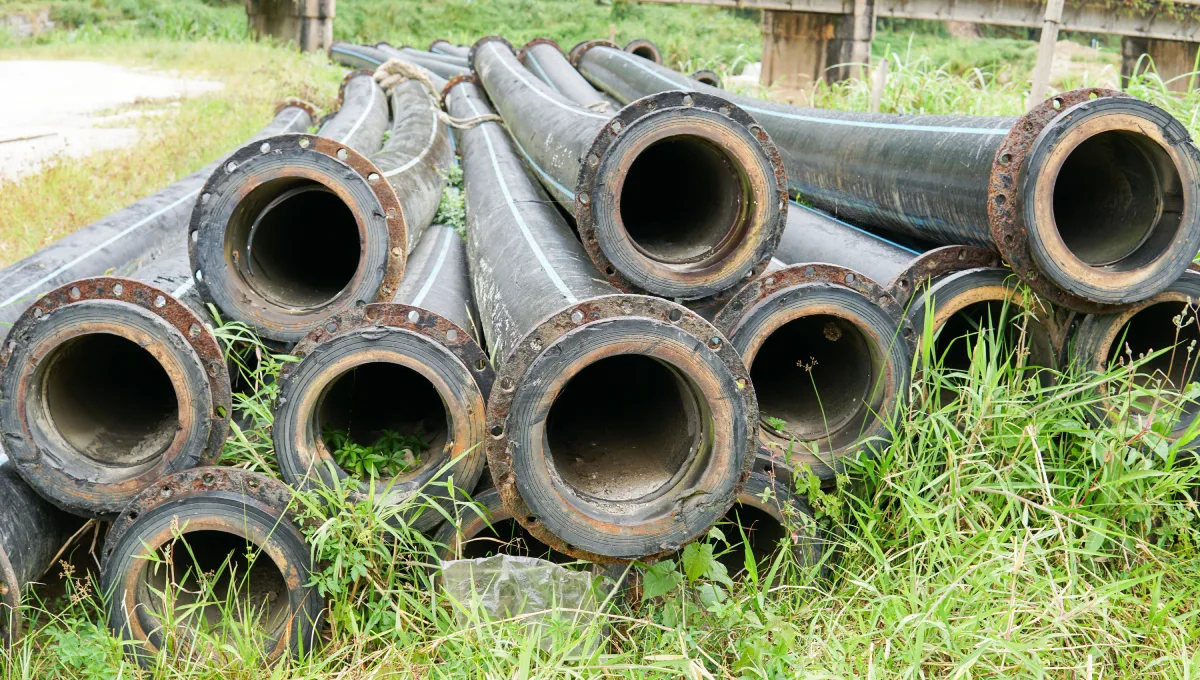
Understanding Slurry Transport Challenges
Slurry transport refers to the movement of solid-liquid mixtures, such as sand, gravel, mineral concentrates, coal ash, or dredged silt, through pipeline systems. Common in dredging, mining, energy production, and infrastructure projects, these mixtures are dense, abrasive, and often highly variable in composition. To handle these challenging conditions, dredge industry pipes are specifically engineered for durability, abrasion resistance, and reliable performance across a wide range of demanding slurry applications.
Despite appearing straightforward, slurry transport presents several technical challenges. The abrasive nature of the particles and the density of the mixture place significant strain on conventional piping systems, which are not engineered to withstand such harsh conditions. Even short runs of pipeline can experience excessive wear, leading to unexpected equipment failures and costly operational delays.
Typical issues include:
- Erosion and abrasion of interior pipe surfaces
- Blockages and flow disruptions due to uneven or pulsating material movement
- Structural failures under extreme pressure or temperature
- Environmental risks in sensitive marine or protected areas
To overcome the challenges of slurry transport, many industries rely on specialized pipes from the dredge industry, specifically engineered for high durability and resistance to abrasion in demanding environments. These pipes are built to handle aggressive mixtures such as sand, silt, and gravel, ensuring long-term performance under pressure. Equally important is the dredge pipe piling as well as the strategic anchoring and stabilization of these pipelines, especially in marine or shifting terrain conditions. Proper dredge pipe piling helps prevent pipeline movement, sediment buildup, and potential system failures.
When dredge industry pipes are combined with expert installation techniques, operations benefit from greater efficiency, reduced maintenance, improved flow consistency, and stronger environmental compliance. This integration ultimately leads to increased uptime and long-term cost savings for dredging and industrial projects.
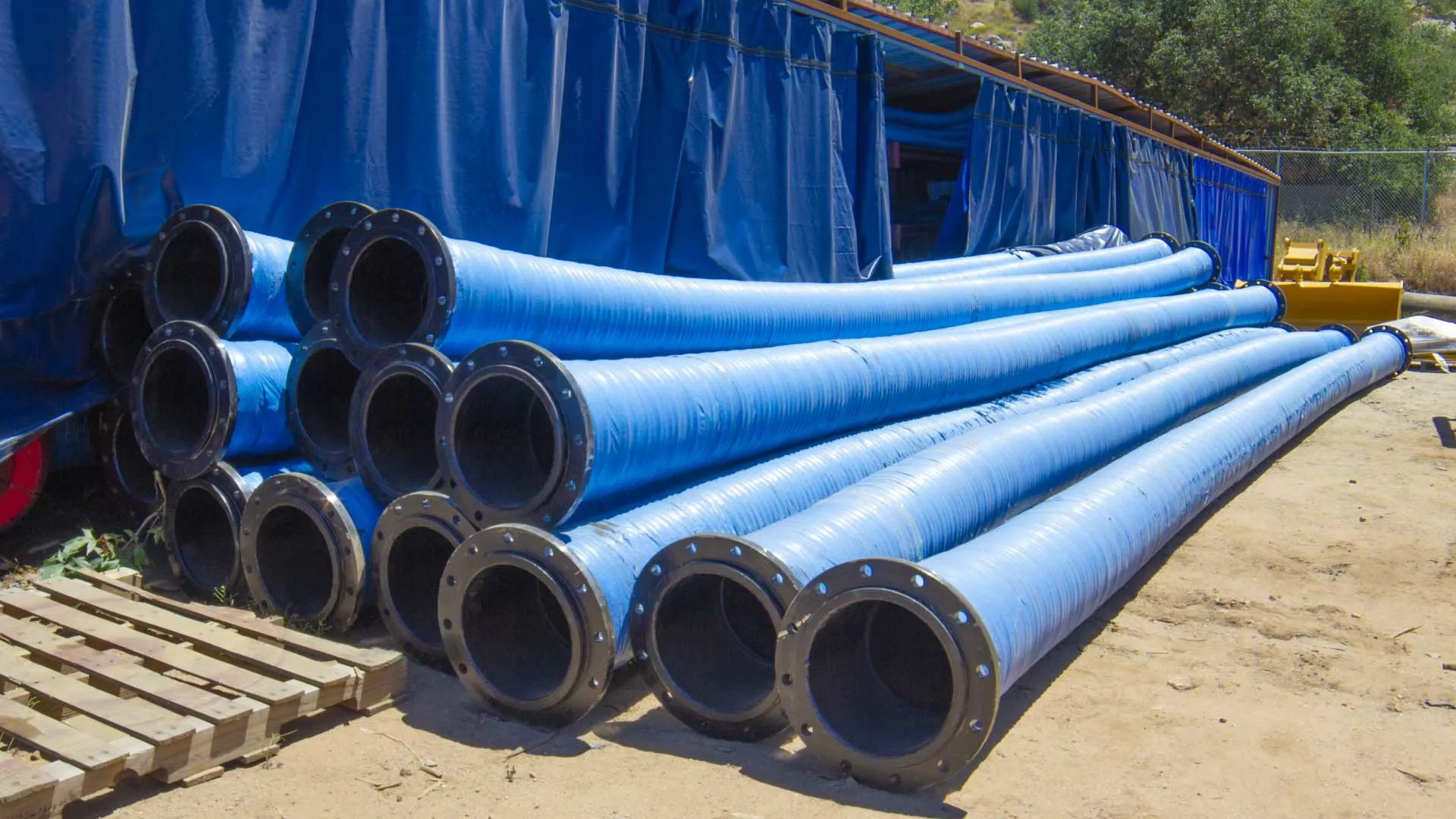
What Are Dredge Industry Pipes?
Dredge industry pipes are specialized piping systems designed to withstand the rigorous demands of slurry transport. These pipes are not off-the-shelf solutions; they are purpose-engineered to accommodate high volumes of abrasive, corrosive, and often high-density materials under dynamic flow conditions.
Common Pipe Types and Materials:
- HDPE (High-Density Polyethylene): Lightweight, corrosion-resistant, and flexible, ideal for floating pipelines and submerged marine applications
- Rubber-lined Steel Pipes: Offer a strong steel structure combined with an internal rubber lining to resist abrasion from coarse materials.
- Rigid Steel Pipes: Suited for high-pressure or long-term installations where structural integrity is critical.
- Composite Pipes: Engineered with hybrid materials to deliver specific performance benefits such as impact resistance, weight reduction, or thermal stability.
What differentiates dredge industry pipes from standard fluid transport pipelines is their emphasis on long-term durability and adaptability. Key features often include:
- Reinforced flanges and gasketed joints for high-pressure sealing
- Anti-abrasion internal linings to extend lifespan
- UV resistance for exposed conditions
- Modular design for easy deployment and section replacement
Proper installation and support, often achieved through strategic dredge pipe pilings, further enhances performance by stabilizing pipelines against shifting terrain and flow-induced vibration. These engineered solutions are critical for operational success in high-stakes dredging and slurry transport environments.
Real-World Applications Across Sectors
1. Marine Dredging
The dredge industry’s pipes play a critical role in coastal protection and harbor operations. They are used in applications such as land reclamation, channel deepening, and beach nourishment, where they transport dredged sediment from offshore excavation points to discharge locations.
Example: In a major harbor dredging project, Anaconda’s modular HDPE pipe systems maintained 24/7 sediment transport, effectively adapting to tidal shifts and vessel movement.
2. Mining and Mineral Processing
In mining, abrasive slurries, such as iron ore tailings or coal ash, must travel long distances to reach their destination. Dredge industry pipes offer the abrasion resistance and durability necessary to handle these harsh materials without requiring frequent maintenance.
Example: A copper mine in Chile utilized steel-reinforced, rubber-lined pipes from Anaconda, which significantly reduced downtime and extended the lifespan of the pipes.
3. Oil and Gas
Slurry pipelines in this sector move sediment or drilling waste. Offshore rigs also use dredge pipe piling methods to stabilize subsea pipelines handling seabed sediment.
Example: A Gulf of Mexico oil terminal relied on corrosion-resistant dredge line to manage sediment without disrupting marine ecosystems.
4. Municipal & Government Projects
Military, naval, and public works departments utilize dredge lines for flood control, canal maintenance, and infrastructure upgrades, benefiting from durable, low-maintenance solutions tailored to the public sector’s demands.
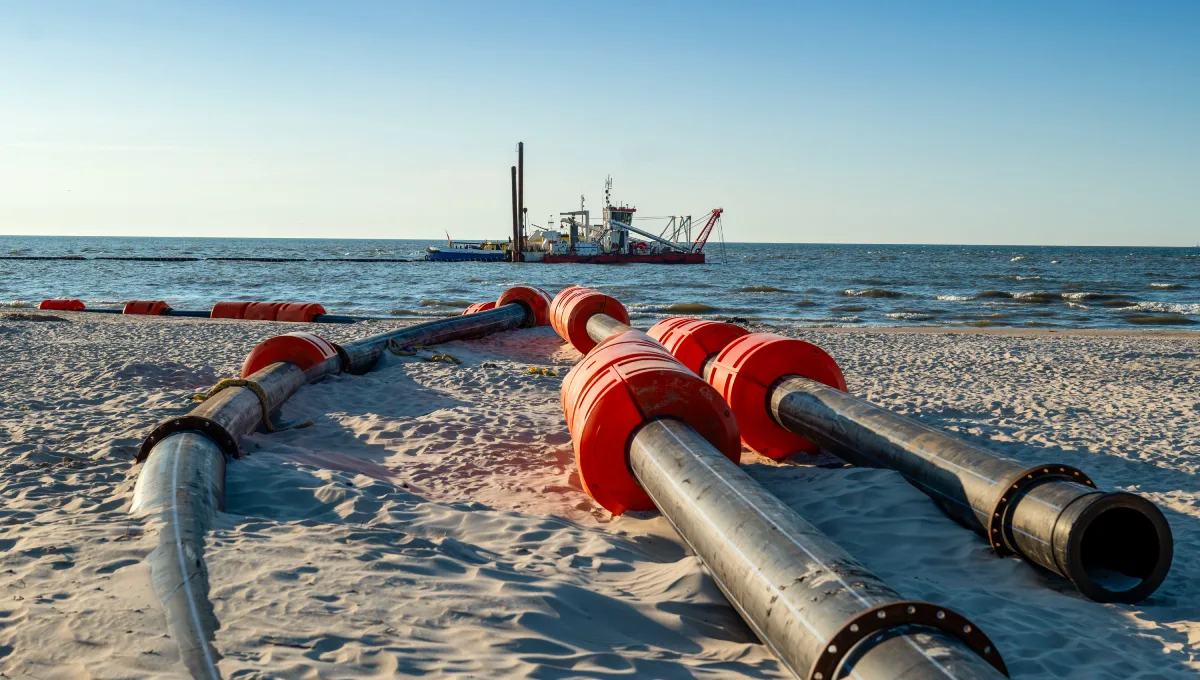
Dredge Pipe Piling and Installation Best Practices
Dredge line piling refers to the methodical process of anchoring, aligning, and stabilizing dredge pipelines, particularly in marine, riverine, or soft-soil environments. Since dredge industry pipes are commonly used in challenging and dynamic conditions such as tidal zones, shifting seabeds, and variable flow rates, poor installation can lead to a range of operational problems. These may include pipeline displacement, sediment buildup, inconsistent pressure, increased maintenance needs, and, in severe cases, catastrophic system failure.
To avoid such setbacks and ensure reliable performance over the long term, following industry-recognized best practices is essential.
Best Practices Include:
- Securing Anchoring Systems: Utilizing weighted anchors, piles, or ballast systems is crucial for stabilizing floating or submerged pipelines. This prevents movement caused by currents, tides, or vessel traffic, protecting pipeline integrity.
- Joint Alignment: Correctly aligning pipe joints ensures a smooth and consistent pressure flow while reducing mechanical stress and the risk of fractures at the connection points.
- Elevation Control: Maintaining a consistent pipeline elevation helps prevent the formation of low points where sediment can collect, thereby ensuring optimal slurry flow and system pressure.
- Flexible Joint Integration: Utilizing flex joints enables the pipeline to accommodate minor ground shifts or tidal fluctuations, thereby minimizing the risk of cracks or joint disconnections.
By pairing proper installation with high-performance dredge industry pipes, operators can significantly extend pipeline life, reduce maintenance frequency, and safeguard project infrastructure. In essence, strategic dredge pipe piling leads to greater operational continuity, improved environmental compliance, and a higher return on investment across marine and inland slurry transport applications.
Performance Advantages That Drive ROI
When selected carefully and installed using best practices, dredge industry pipes provide measurable performance advantages that directly impact operational efficiency, safety, and profitability. These advantages are especially relevant to decision-makers in sectors like dredging, mining, oil and gas, and public infrastructure, where both environmental and financial stakes are high.
1. Abrasion and Corrosion Resistance
Slurries often contain coarse, abrasive particles that can quickly degrade unprotected pipes. Dredge industry pipes are engineered with specialized internal linings such as rubber, ceramic, or polymer that resist abrasion and chemical corrosion. This significantly increases service life and minimizes unexpected repair costs.
2. Operational Flexibility
In fast-moving or temporary projects, adaptability is key. Modular HDPE and composite pipes offer flexibility in deployment, allowing teams to quickly reconfigure or relocate pipeline segments without compromising structural integrity. This is particularly advantageous in remote dredging operations or projects involving terrain shifts or changes in water levels.
3. Reduced Downtime
Every unplanned shutdown leads to lost productivity and increased costs. High-quality materials, combined with precise installation and dredge pipe piling techniques, result in stronger, more reliable systems that resist failure under pressure, ensuring continuous flow and stable operations.
4. Lower Total Cost of Ownership
While premium systems may involve a higher initial investment, the long-term benefits of fewer repairs, less frequent replacements, and smoother performance quickly justify the cost. By choosing durable dredge industry pipes, organizations can achieve significant savings and enhance project ROI.
Ultimately, investing in high-performance dredge piping systems delivers not only technical excellence but also long-term financial value.
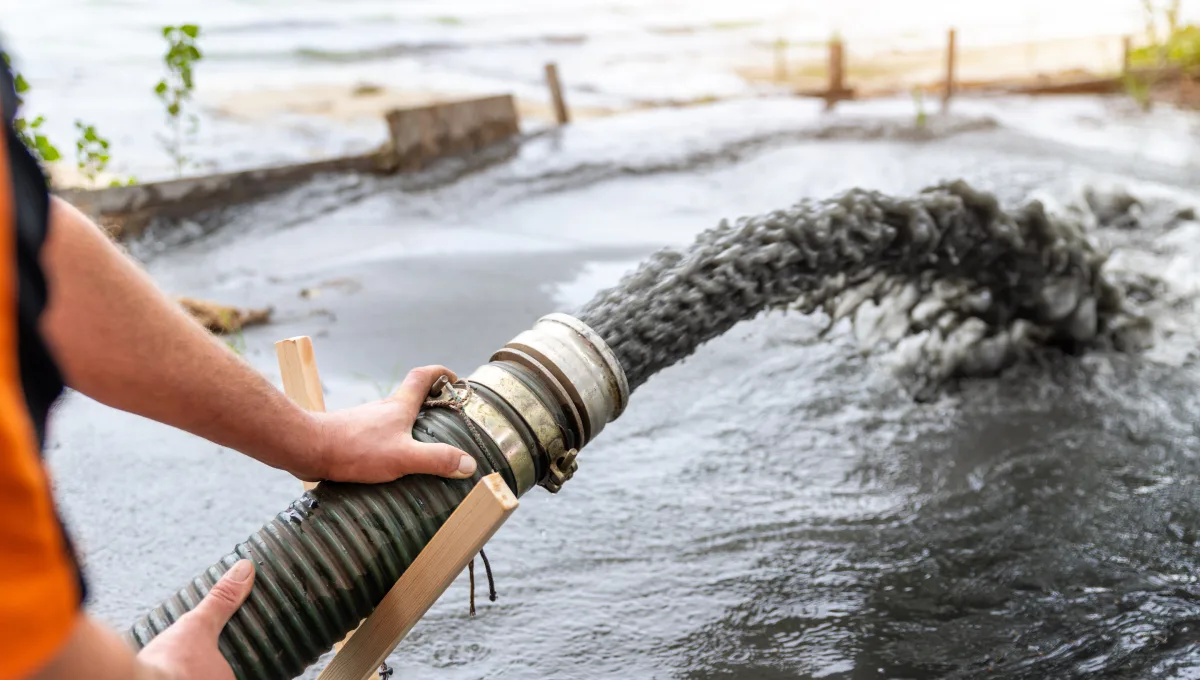
Choosing the Right Dredge Pipe for Your Project
Selecting the appropriate pipe system for a dredging operation is more than just a technical decision; it’s a strategic investment that affects performance, cost-efficiency, and long-term system reliability. With the increasing complexity of dredging projects across various industries, selecting the right dredge industry pipes requires a careful evaluation of both engineering needs and environmental conditions.
Key Considerations:
- Operating Pressure and Flow Rate: Different dredging applications involve varying pressure loads and material volumes. The selected dredge industry pipes must be rated to handle these conditions without compromising structural integrity or joint reliability.
- Abrasive Nature of the Slurry: Materials such as sand, gravel, or industrial waste can quickly wear down internal surfaces, causing damage. Opting for pipes with specialized linings (like rubber, ceramic, or polymer) ensures higher resistance to abrasion, prolonging service life.
- Pipe Length and Terrain: Whether deploying pipelines over long distances or across uneven ground, the right balance between rigidity and flexibility is essential. HDPE or composite pipes may offer needed adaptability, while steel options provide strength for stationary or elevated applications.
- Installation Environment: Dredging operations occur in diverse settings, including marine, riverine, land-based, submerged, and floating environments. The type of dredge industry pipes selected must align with environmental variables and anchoring needs, especially in projects that demand specialized dredge pipe piling for stability.
Why Work with Anaconda Pipe & Hose?
At Anaconda, we don’t just deliver pipes, we deliver complete, field-tested solutions. Our offerings include custom fabrication, technical consultation, and precision manufacturing of pipes for the dredge industry, built to perform under pressure. Whether you’re managing a government contract or a private sector industrial project, our team collaborates with you from initial design to final installation.
We ensure that every pipeline meets your specific operational demands, minimizing downtime, optimizing flow, and reducing total ownership costs. With Anaconda, you gain a trusted partner dedicated to engineering excellence and long-term success in the dredging sector.
Maximizing Performance with the Right Dredge Pipe Solutions
In critical industries such as dredging, mining, oil and gas, and government infrastructure, efficient and reliable slurry transport is not just an operational detail; it’s a fundamental requirement. Every decision, from equipment choice to pipeline configuration, has direct implications on project efficiency, cost, and timeline. One of the most important elements in this equation is selecting the right pipes for the dredge industry.
High-quality dredge industry pipes are engineered to withstand harsh environments and challenging materials. Whether you’re dealing with abrasive slurry, high-pressure flow, or shifting terrain, the right pipe solution minimizes downtime, reduces long-term maintenance costs, and ensures system integrity throughout the project’s life.
Moreover, in complex environments such as tidal zones or riverbeds, dredge pipe piling plays a vital role in anchoring the pipeline. Improper piling and installation techniques can lead to misalignment, pressure drops, or even structural failure. When pipelines are paired with proper dredge pipe piling strategies, they remain secure, aligned, and efficient in the face of external forces like currents, weather, or ground instability.
Anaconda Pipe & Hose stands at the forefront of engineered piping solutions. Our extensive inventory of dredge industry pipes includes steel, HDPE, rubber-lined, and composite systems designed to meet the diverse needs of industrial and governmental dredging operations. We don’t just sell pipe; we bring deep technical expertise, custom engineering, and field-proven performance to every project.
From initial consultation through installation, our team is committed to understanding your challenges and delivering solutions tailored to your goals. Whether you need floating pipeline systems, custom linings, or anchoring support, Anaconda is your trusted partner for durable, high-performance dredge industry pipes.
Ready to Optimize Your Slurry Transport System?
Contact Anaconda Pipe & Hose today for a technical consultation or request a custom specification quote tailored to your project’s specific needs.


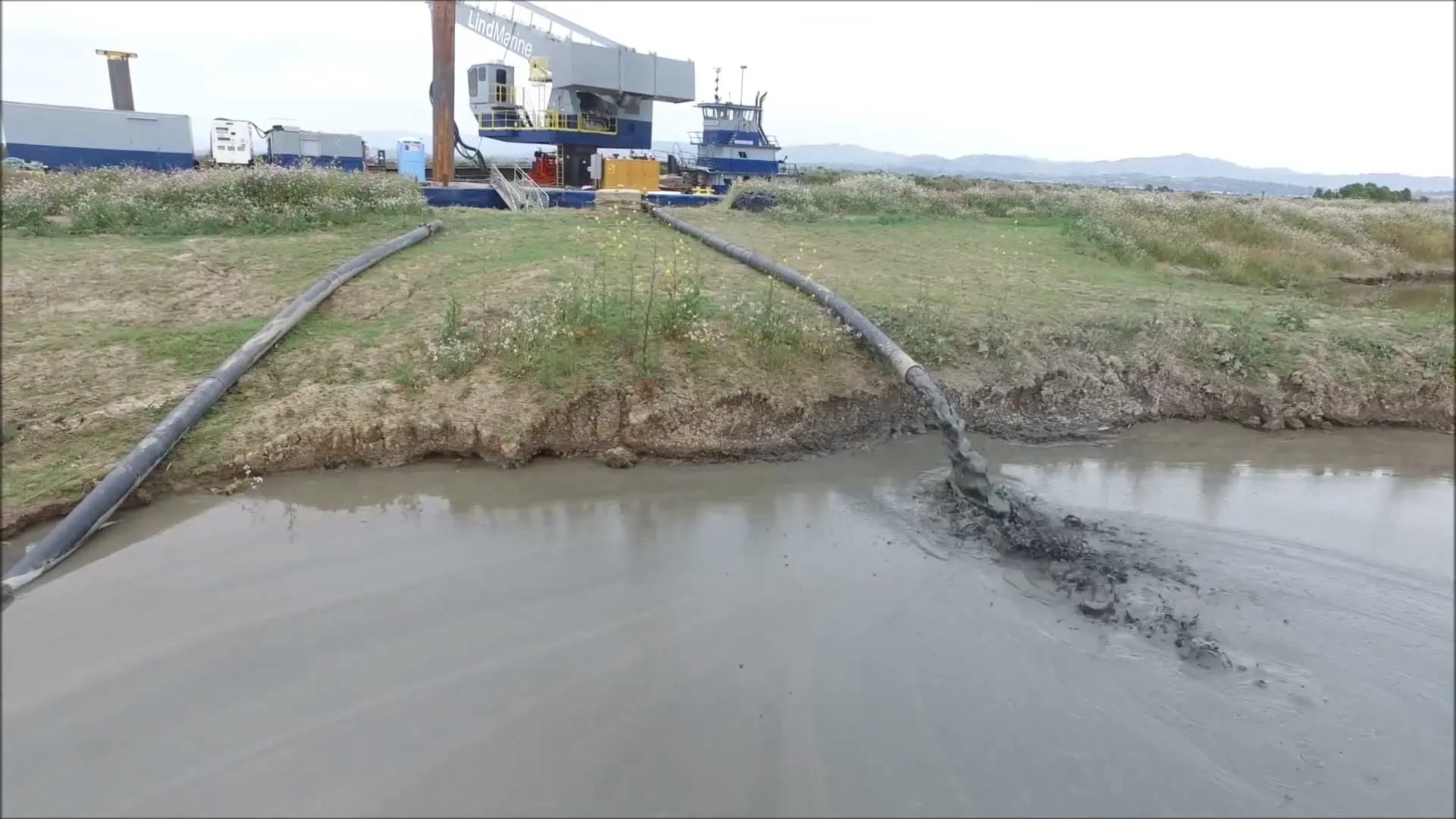

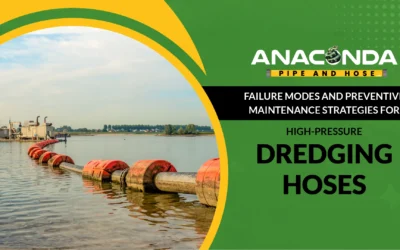
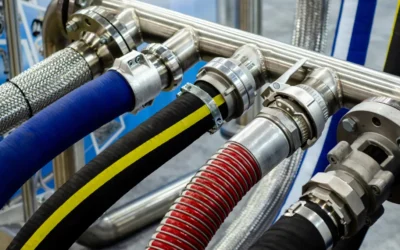
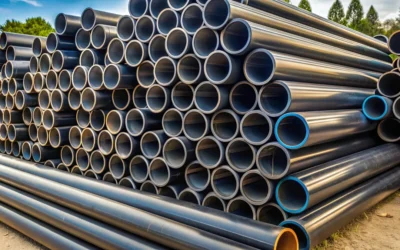
0 Comments